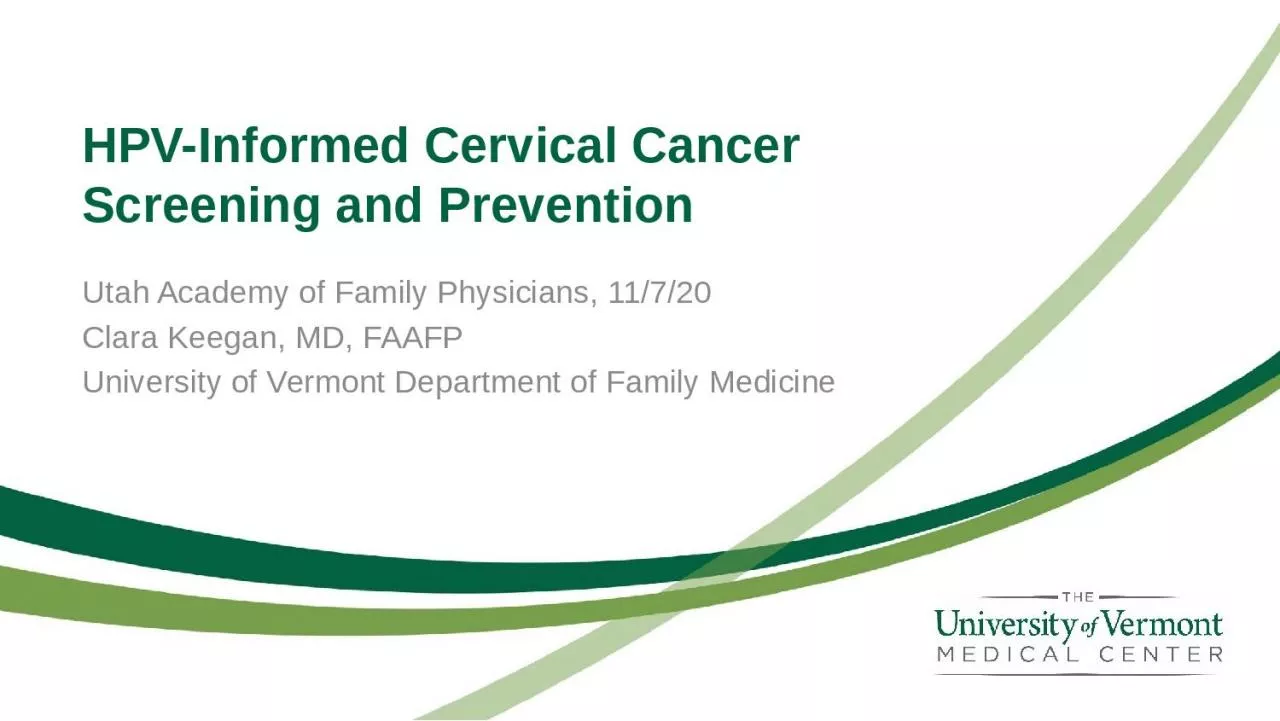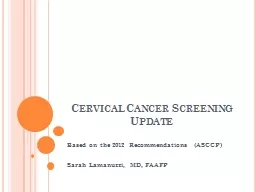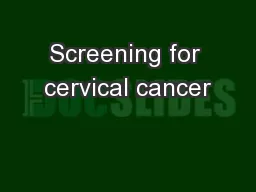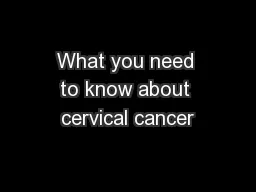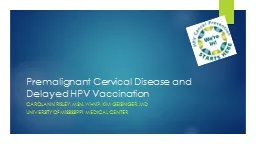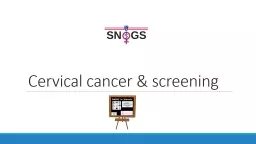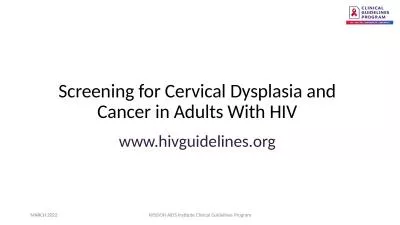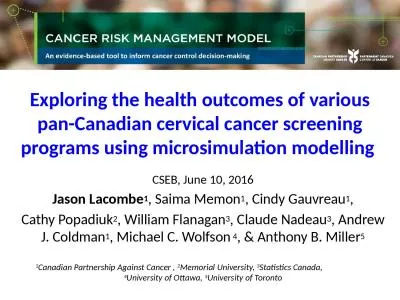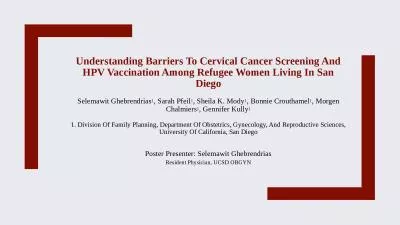PPT-HPV-Informed Cervical Cancer Screening and Prevention
Author : wilson | Published Date : 2024-01-29
Utah Academy of Family Physicians 11720 Clara Keegan MD FAAFP University of Vermont Department of Family Medicine After this activity I hope you will be able to
Presentation Embed Code
Download Presentation
Download Presentation The PPT/PDF document "HPV-Informed Cervical Cancer Screening a..." is the property of its rightful owner. Permission is granted to download and print the materials on this website for personal, non-commercial use only, and to display it on your personal computer provided you do not modify the materials and that you retain all copyright notices contained in the materials. By downloading content from our website, you accept the terms of this agreement.
HPV-Informed Cervical Cancer Screening and Prevention: Transcript
Download Rules Of Document
"HPV-Informed Cervical Cancer Screening and Prevention"The content belongs to its owner. You may download and print it for personal use, without modification, and keep all copyright notices. By downloading, you agree to these terms.
Related Documents

